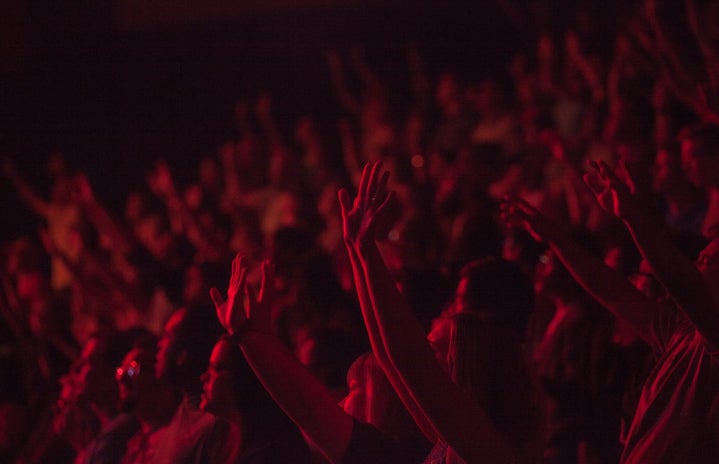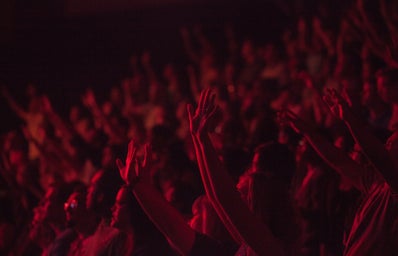In a vast music industry, there are spaces for many different types of people to find their specific subculture and representation. However, the plethora of different genres can create a rift in between each community. Only music that is more mainstream is relevant, whereas smaller genres tend to remain in the shadows. Mainstream music, specifically in the United States, falls under the category of Pop, Rap, R&B and Country. All these styles of music have one thing in common: they are almost entirely English.
Our diverse country is considered to be the melting pot for all cultures. However, culture, film and music are predominantly produced in English. Recently, other language films and music are starting to come into the spotlight. These include Latin American music and K-pop, which have their own fan bases within the U.S. However, music made in other countries and written in other languages have had a difficult time breaking into the mainstream music scene.
The Desi music scene has slowly been gaining popularity over the years. Rather than music from regions of the Desi countries, the music largely is from Desi artists who live in the United States or Europe specifically making diasporic music. This music blends elements of Desi music with English lyrics. One of the most popular examples is M.I.A, a British Sri Lankan singer-songwriter who has had many of her songs on the Billboard chart. She has been nominated for numerous awards. Her song “Bad Girls” blew up on TikTok a few months ago.
However, Desi music has never started to be more relevant than over this past winter break. With the nomination and winning of RRR’s “Naatu Naatu” at the Golden Globes for Best Original Song and “Pasoori” being the top searched song in 2022, the Desi music industry has been urged forward towards the spotlight. These songs are from India and Pakistan, written and sung by Indian and Pakistani artists.
Similar scenarios also happened to other industries. The biggest recent example is K-pop. K-pop band BTS has long standing fame, but within a smaller fanbase. However, the group winning a Grammy for their song “Blood Sweat & Tears” has helped expose the entire K-pop industry into Western culture.
Today, there is already visible interconnectivity between the Desi and Western music industries. Desi artists Diljit Dosanjh and Ali Sethi performed at Coachella. Diljit Dosanjh is the first Punjabi artist to perform in their native language at the event. He played Bhangra music, which many people, including those who were unfamiliar with the music genre, greatly enjoyed along with his energetic performance. Ali Sethi performed his chart topping song “Pasoori” with singer Raja Kumari. Many people across social media have expressed interest in hearing more from the artists and have been searching them up. With the artists performing at one of the most attended music festivals, they have huge coverage from Western media. This propelled them and Desi music into the Western spotlight. There is no sign that the increased interest in music is a fad, so it can be assumed that Desi music will have a steady incline into the Western world.
Moreover with prior events like the Dior Fashion Show in India along with the opening of the Nita Mukesh Ambani Cultural Center (NMACC), India is becoming a more prominent part of Western media. The Dior show showcased a new line of clothing being inspired by Indian culture at the Taj Mahal. The Pre-Fall 2023 line used intricate artisan techniques used in India. Moreover, the NMACC furthered centered India.
Many A-list celebrities and popular influencers from Hollywood and Western entertainment were invited to attend the opening of NMACC, including Zendaya, Tom Holland, Priyanka and Nick Jonas, Emma Chamberlain and Gigi Hadid, among many other influencers. These celebrities attended the event wearing traditional Indian clothing, representing their respect for the culture. They, of course, were also accompanied by big names in Indian film and media. The interactions and performances between the two groups of people were exciting to watch as it was a way of Western culture accepting and appreciating Desi culture. Admittedly, it was funny to see the most iconic Indian actor Shah Rukh Khan in the back of an influencer’s video with a mouthful of food.
Through Desi culture playing a more prominent role with increased attention, there will be more acceptance and longevity of it in Western culture. The cultural and fashion scene is being highlighted simultaneously alongside the music industry, which means the entire culture is being presented through media. As Desi music and culture seeps into mainstream Western media, there are so many other landmarks of representation that are yet to be achieved.
Interested in Desi music? Check out these artists: Rithviz, Dhevi Sri Prasad (DSP), Ar Rhaman, Sidhu Moose Wala and Arjit Singh.

